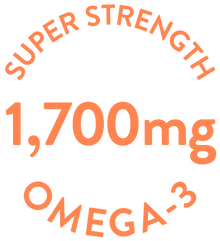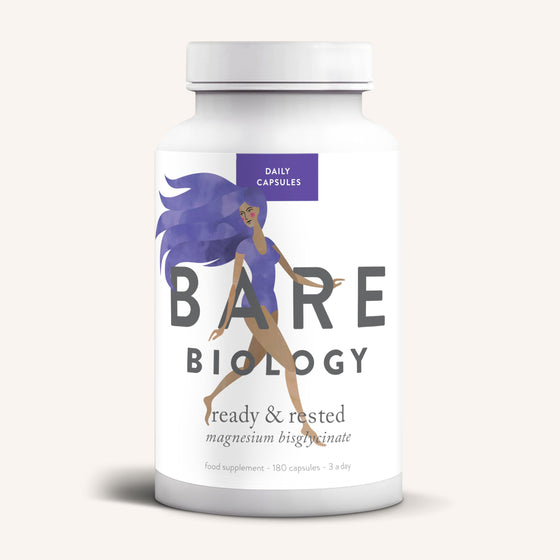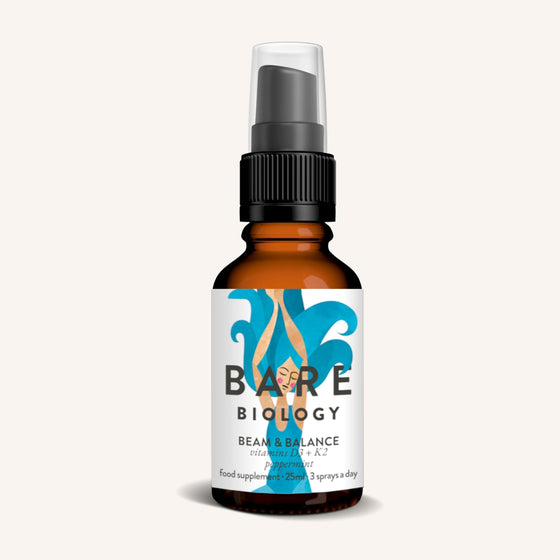Written by Nutritional Therapist Kate Fisk
Melanie, the founder of Bare Biology, knows I love a good podcast. So she recently asked me to review an episode of the Huberman Lab podcast, which aired earlier this year.
Andrew Huberman is a neuroscientist who specialises in neural regeneration and neuroplasticity, which is how the brain changes and adapts its activity in response to new information or experiences. His science-based podcast is hugely popular, often hovering in and around the top ten. He's skilled at breaking down the science over various topics, making them accessible for the layperson.
In episode #110, 'How to Stop Headaches Using Science-Based Approaches', Huberman talks about different kinds of headaches, what causes them and how to distinguish between them, or rather, what is at their root cause. Once you've established this, he surmises, you can treat or support accordingly. And you might be surprised that what works for one won't necessarily work for another.
Huberman emphasises getting the basics in place before we can even think about obtaining optimal or even good health. And I wholeheartedly agree. These foundations include good sleep, stress management, social connection, and healthy circadian rhythms. And, of course, good nutrition based on a whole-food diet and daily movement. All these are the glue holding our health together; when they're off-kilter, our body becomes stressed. And if the body is stressed, it cannot heal, detoxify or digest properly.
So, headaches. We all get them, but for some, they can be debilitating. In this podcast, Huberman focuses on five different types: migraine, tension or stress, cluster, hormonal headaches and those which occur after traumatic brain injury.
Let's have a look at what 'puts the ache' in some of these headaches and what we can do to support them.
Migrane Headaches
What do they feel like?
Migraines are usually recurrent and can be extremely debilitating. They're often experienced as pounding or throbbing. They're associated with light sensitivity, or photophobia, and often nausea. In up to 20% of cases, they're preceded by an aura, a visual or auditory disturbance, often described as flashing lights or blind spots.
What causes them?
No one cause for migraines has been defined, but they're thought to come about due to abnormal brain activity which affects the nerves in our brain, causing our blood vessels to dilate.
Women are three times more likely to suffer from migraines than men. Huberman suggests it's not known why this is. However, a paper released around the same time as the podcast draws a link between oestrogen levels and migraines.
Three protective membranes surround our brain and spinal cord, collectively called the meninges. These act as a buffer to protect against injury, but there isn't much wiggle room. If the blood vessels in our brain dilate, i.e., get bigger and wider, as happens in migraine, this will increase the pressure between our brain and our skull, resulting in the potential to cause pain.
Some triggers for migraine include smoke, particular smells, hormonal changes, and food additives such as monosodium glutamate.
Stress tension headaches
What do they feel like?
These are the most common type of headaches. Huberman describes them as feeling like a tight headband around the head or a halo-like effect around the top of the head. They can extend downwards into the jaw, neck and even the shoulder or upper back.
What causes them?
We're all familiar with this type of headache. There are a few theories on how they come about: a constriction of the muscles around our skull and neck may result in a narrowing of our blood vessels, known as vasoconstriction, and the release of inflammatory substances. Or the contraction of these muscles may ‘pull’ on the tissues in the meninges, which contain pain receptors. Genetic factors may play a role too.
Two significant contributing factors include poor posture (‘tech-neck’) and stress. Some studies have found a link between sub-optimal vitamin B12 and vitamin D levels, although further studies are needed for conclusive evidence. Other contributing factors include high stress levels, poor sleep, disrupted circadian rhythms, teeth grinding, dehydration, alcohol consumption, too much caffeine, or caffeine withdrawal.
Cluster headaches
What do they feel like?
Unlike tension headaches, these feel like they're coming from deep within the head and can be excruciatingly painful. They tend to come on suddenly, lasting between fifteen minutes and three hours. They often occur frequently throughout the day and may even occur during sleep. Periods of remission may last for months or even years. We're not sure why, but they're more common in men. They generally appear on one side of the head, often around the eye, nose or mouth. They can cause a droopy face, teary eyes and post-nasal drip. They may also cause a constriction of the eyes but not dilation of the pupil.
What causes them?
As Huberman explains, these happen because of a disturbance in the trigeminal nerve. This is the largest and most complex cranial nerve serving the eye, nose and mouth areas. Though not fully understood, the onset of cluster headaches seems to be linked to our circadian rhythm, as attacks often occur with clocklike regularity.
Cluster headaches and migraines used to be classed as 'vascular headaches', a term used to describe any headaches involving changes to the blood vessels in the head and neck. In these headaches, the ache is caused by a dilation of the blood vessels or vasodilation.
Hormonal headaches
What do they feel like?
Hormonal headaches are very common and often accompanied by joint pain and fatigue. They can be severe and are often classed as hormonal migraines.
What causes them?
No prizes for guessing fluctuating hormone levels are the culprit here. Both oestrogen and progesterone affect the constriction and dilation of our blood vessels and contribute to our inflammatory response. This type of headache is most likely to occur during the first week of the menstrual cycle when you have your period, as this is when oestrogen and progesterone are at their lowest. Changes to these hormone levels due to pregnancy, menopause or birth control may also result in headaches.
Support
Most people reach for a painkiller when they feel a headache coming on. And it's often a non-steroidal anti-inflammatory or NSAIDs, such as ibuprofen or aspirin, they reach for. But, as Huberman points out, the problem with these is they can be tough on the body. As they can affect the production of the acid-protective mucus lining of our stomach, some of the most common side effects, mainly after long-term use, are gut issues such as heartburn, diarrhoea or constipation. Not only that, but this type of drug can contribute to the dilation of our blood vessels. This may help reduce tension-type headaches, where vasoconstriction is to blame, but could worsen those involving vasodilation, such as migraines and cluster headaches. There is, however, evidence to suggest high doses of aspirin may relieve migraine symptoms and reduce recurrent attacks.
What are the alternatives?
Omega-3
Here's the good news. Higher levels of omega-3, whether through diet or supplementation, are associated with less frequent headaches, including migraines. In addition, a high omega-6 to omega-3 ratio (we ideally want this at 4:1 or less) is associated with more severe tension-type headaches.
Huberman also suggested omega-3 may benefit those suffering from hormonal headaches. Unfortunately, research is scant in this area. However, we know healthy levels of omega-3 will help maintain the fluidity of cell membranes, which is essential for good hormone communication and balance. As a side note, supplementing omega-3 has been shown to improve the quality of life for PMS-sufferers.
Red Light Therapy
Huberman suggests avoiding light exposure is vital when a migraine comes on. In particular blue light, like that given out by screens and LED light bulbs. Bright blue or blue-green light can trigger photophobia or aura in those susceptible to migraines. He suggests red or orange light exposure can help offset this and ease migraine symptoms. And there's evidence to back this up. However, a study in 2016 found exposure to green light was the only colour that didn't exacerbate migraine symptoms and may even reduce the intensity of headaches.
Peppermint
According to Huberman, when mixed with ethanol and applied directly to the skin, peppermint oil outperforms NSAIDs for headache relief. In addition, a 2016 study concluded the topical application of peppermint oil is more effective than placebo and compared its efficacy to that of paracetamol in treating tension-type headaches.
Acupuncture
Huberman discusses the uses of acupuncture to reduce tension headaches. Scientific research tentatively backs this up, though further studies are required. It may also be beneficial in the treatment of migraine.
Some other potential support for headaches I would add include:
- Good hydration.
- Yoga, with a focus on the neck and shoulders, may help relieve tension-type headaches
- A warm bath with Epsom salts will help relax muscles and gently raise magnesium levels; migraines and headaches are linked to low magnesium levels. Eating leafy greens every day is another way to ensure you get the magnesium you need.
- Pay attention to trigger foods and situations. Try keeping a symptom diary. For example, if you always get a headache after a disturbed night's sleep, it's time to sort your sleep habits out. If you think your headache might be hormonal, consider working with a Nutritional Therapist to help you regain balance.





